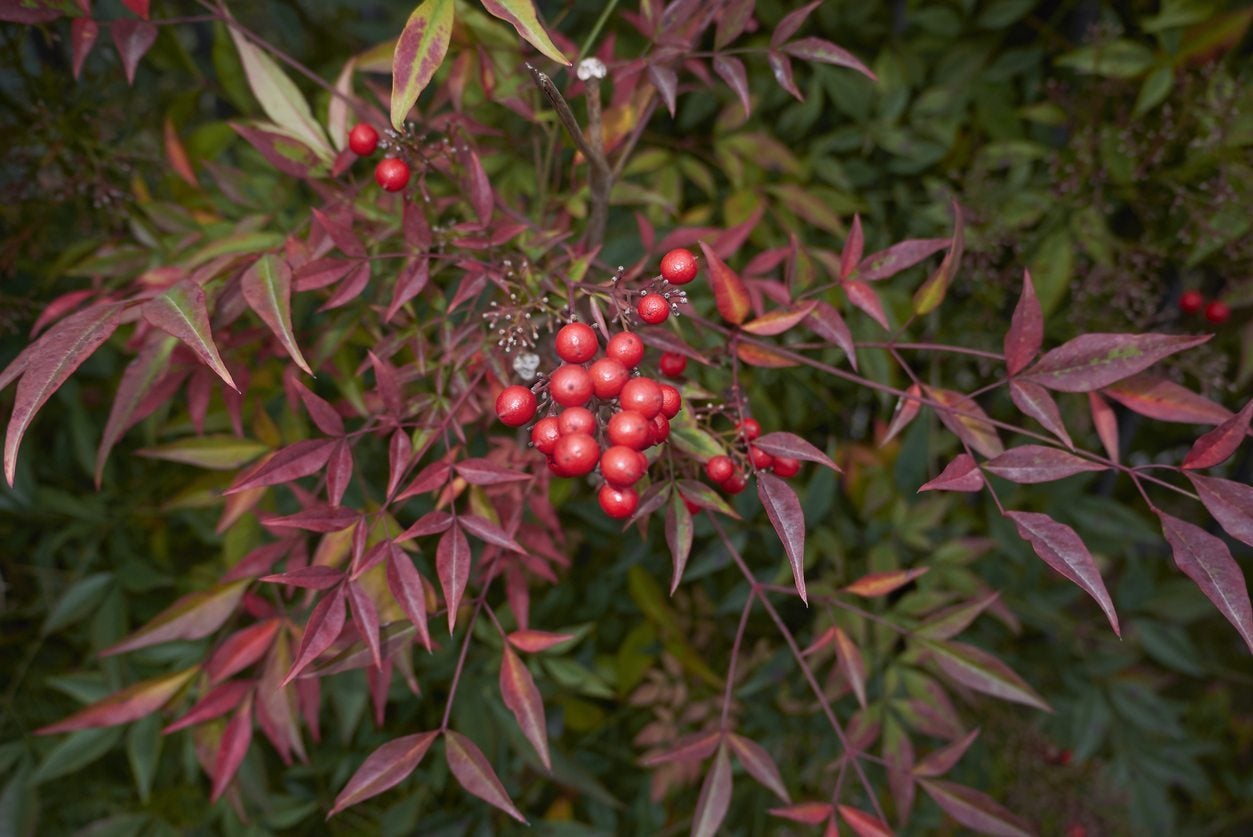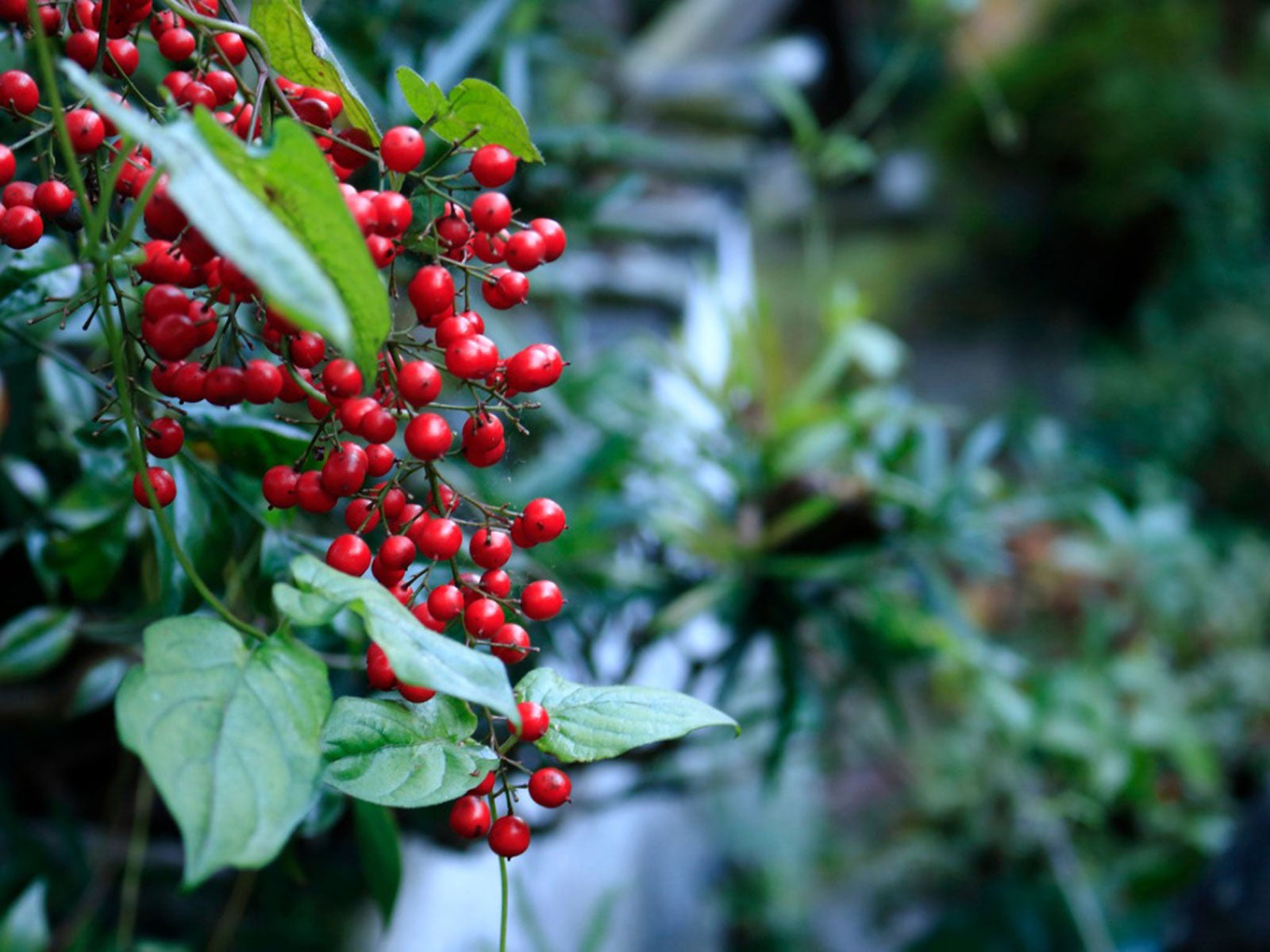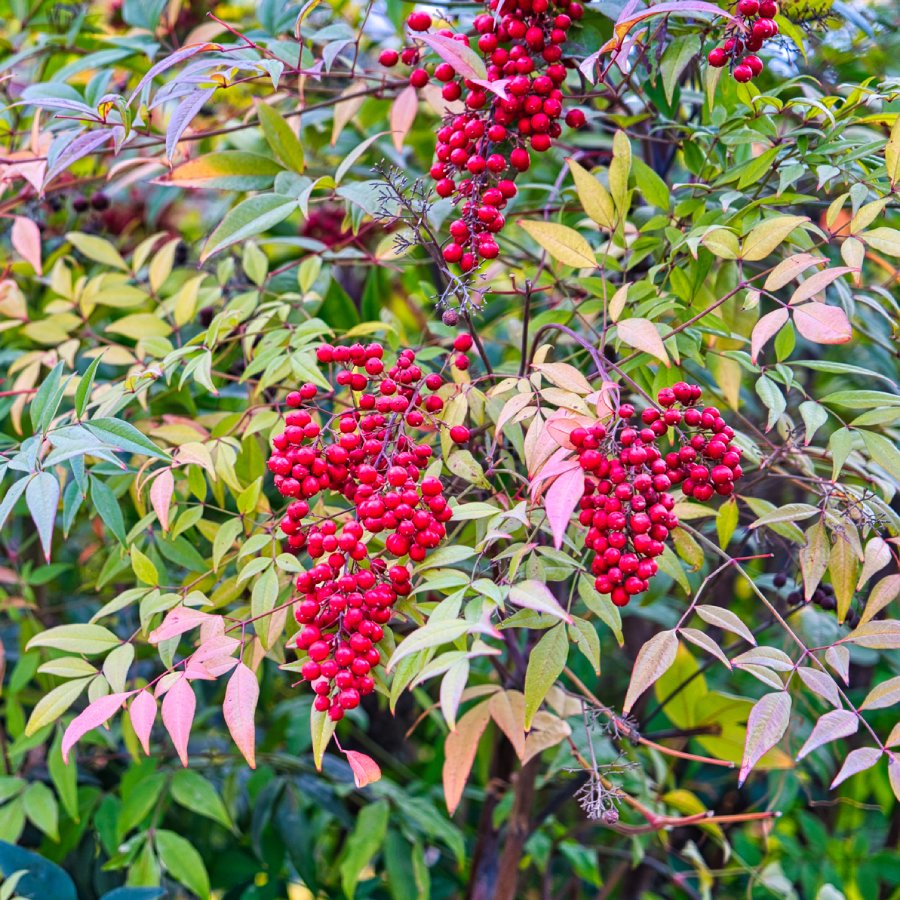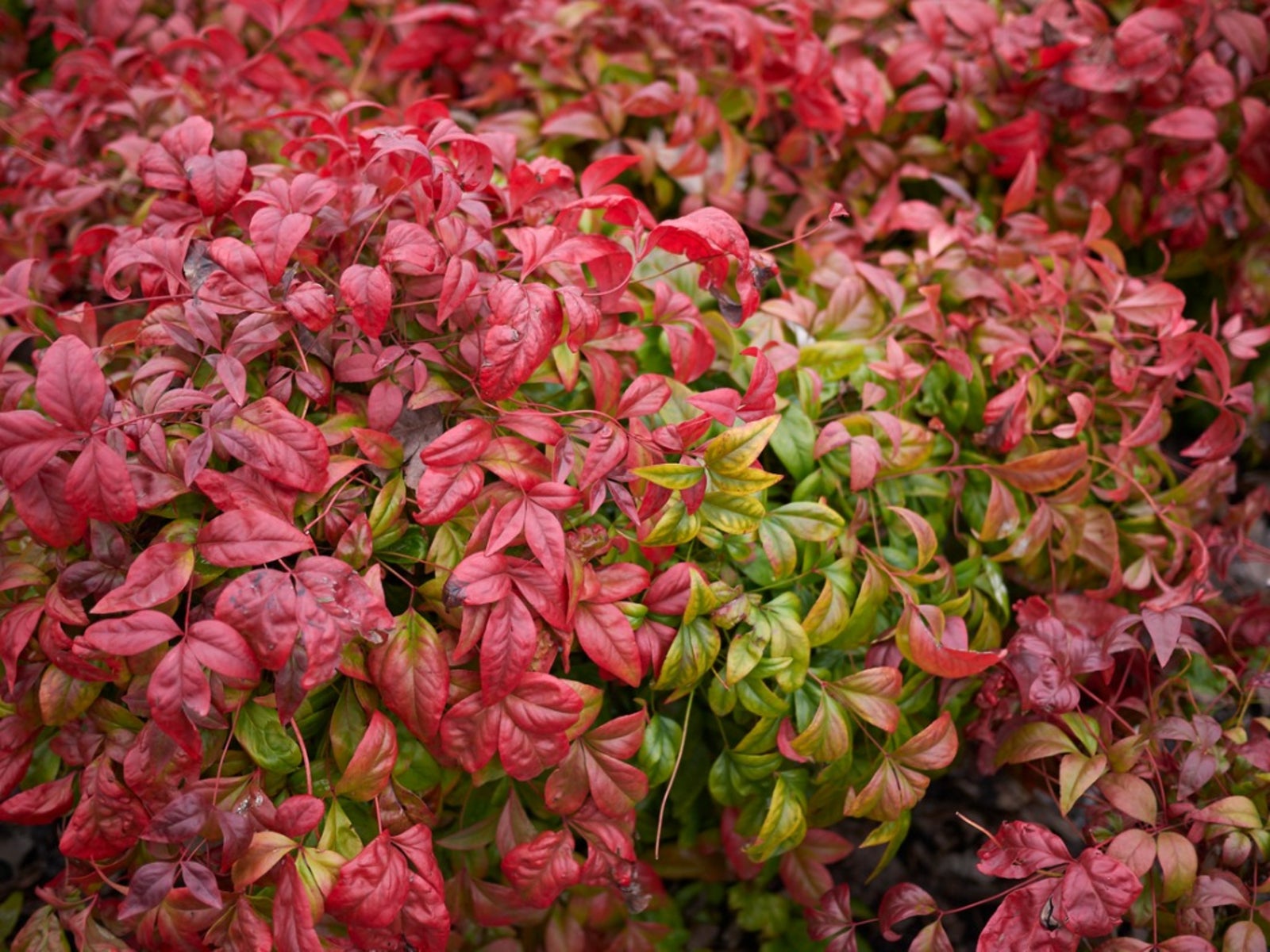Nandina Plant Pruning: Tips For Cutting Back Heavenly Bamboo Shrubs


If you want a tall easy-care shrub with showy flowers that doesn’t require much water, how about Nandina domestiica? Gardeners are so thrilled with their nandina that they call it “heavenly bamboo.' However, nandina plants can get leggy as they grow taller. Pruning heavenly bamboo plants keeps these foundation shrubs dense and bushy. If you want to learn how to prune nandina, we’ll give you the top tips on cutting back heavenly bamboo.
Nandina Plant Pruning
Despite the common name, nandina plants are not bamboo at all, but they resemble it. These tall shrubs are both stiffly upright and very graceful. Adding them to your garden adds texture and an oriental touch. Although you probably need to prune heavenly bamboo to keep it looking its best, the shrub offers so much in return. It is evergreen and provides ornamental features in every season. In spring and summer, it offers frothy white flowers that turn to bright berries in autumn and winter. Nandina’s leaves turn red in the fall as well, while new foliage grows in bronze. You’ll find that heavenly bamboo comes in different sizes. Dwarf cultivars are available that stay under 5 feet (1.5 m.) tall. Other shrubs can get to 10 feet (3 m.) tall. They have a lovely, natural shape and it is a mistake to try to shear them into shapes. Pruning heavenly bamboo plants to keep them bushy is worth the effort. Nandina plant pruning allows for a fuller plant.
How to Prune Nandina for Density
Keep in mind that pruning heavenly bamboo plants severely is not always necessary. The shrub grows slowly and keeps its shape. An annual pruning in early spring allows taller cultivars to produce new shoots and lacy foliage at lower levels of the trunk. Keep the rule of thirds in mind. Get out the pruners or loppers in winter or early spring and begin. Start by cutting back heavenly bamboo canes. Take out one-third of the total number at ground level, spacing those you remove evenly throughout the bush. Then, prune heavenly bamboo stalks – one-third of those remaining – to reduce their height. Snip them off above a leaf or leaf bud about halfway down the cane. As they sprout new growth, they will fill in the plant. Leave the remainder of the plant unpruned.
Gardening tips, videos, info and more delivered right to your inbox!
Sign up for the Gardening Know How newsletter today and receive a free copy of our e-book "How to Grow Delicious Tomatoes".

Teo Spengler is a master gardener and a docent at the San Francisco Botanical Garden, where she hosts public tours. She has studied horticulture and written about nature, trees, plants, and gardening for more than two decades. Her extended family includes some 30 houseplants and hundreds of outdoor plants, including 250 trees, which are her main passion. Spengler currently splits her life between San Francisco and the French Basque Country, though she was raised in Alaska, giving her experience of gardening in a range of climates.
-
 Zinnias On Repeat: 10 Glorious Cut-And-Come-Again Varieties For Endless Summer Bouquets
Zinnias On Repeat: 10 Glorious Cut-And-Come-Again Varieties For Endless Summer BouquetsThese zinnia varieties keep giving all summer, making them the perfect choice for dedicated cutting gardens – or just the occasional homegrown bouquet.
By Ellen Wells
-
 Create A Romantic Garden Straight Out Of Bridgerton: Regency Era Romance In Your Garden
Create A Romantic Garden Straight Out Of Bridgerton: Regency Era Romance In Your GardenTry some romantic garden ideas straight out of Bridgerton. Flowers and gardens in the Regency era were lush and charming and you can get the same look!
By Bonnie L. Grant
-
 Toxic Berries To Birds – Do Nandina Berries Kill Birds
Toxic Berries To Birds – Do Nandina Berries Kill BirdsAre nandina berries of heavenly bamboo poisonous? Yes! The berries contain cyanide and can be toxic berries to birds. Learn more here.
By Teo Spengler
-
 Heavenly Bamboo Control – How To Get Rid Of Heavenly Bamboo Bushes
Heavenly Bamboo Control – How To Get Rid Of Heavenly Bamboo BushesMany gardeners want to learn about heavenly bamboo management. Click here for tips on how to get rid of Nandina in the landscape.
By Amy Grant
-
 Native Nandina Alternatives: Heavenly Bamboo Replacement Plants
Native Nandina Alternatives: Heavenly Bamboo Replacement PlantsBy Becca Badgett
-
 Growing Heavenly Bamboo - Tips On Caring For Heavenly Bamboo
Growing Heavenly Bamboo - Tips On Caring For Heavenly BambooHeavenly bamboo plants have many uses in the landscape. Growing heavenly bamboo is not complicated, and you can learn more here in this article. Once you've learned the basics of caring for heavenly bamboo, you can enjoy this attractive plant.
By Becca Badgett